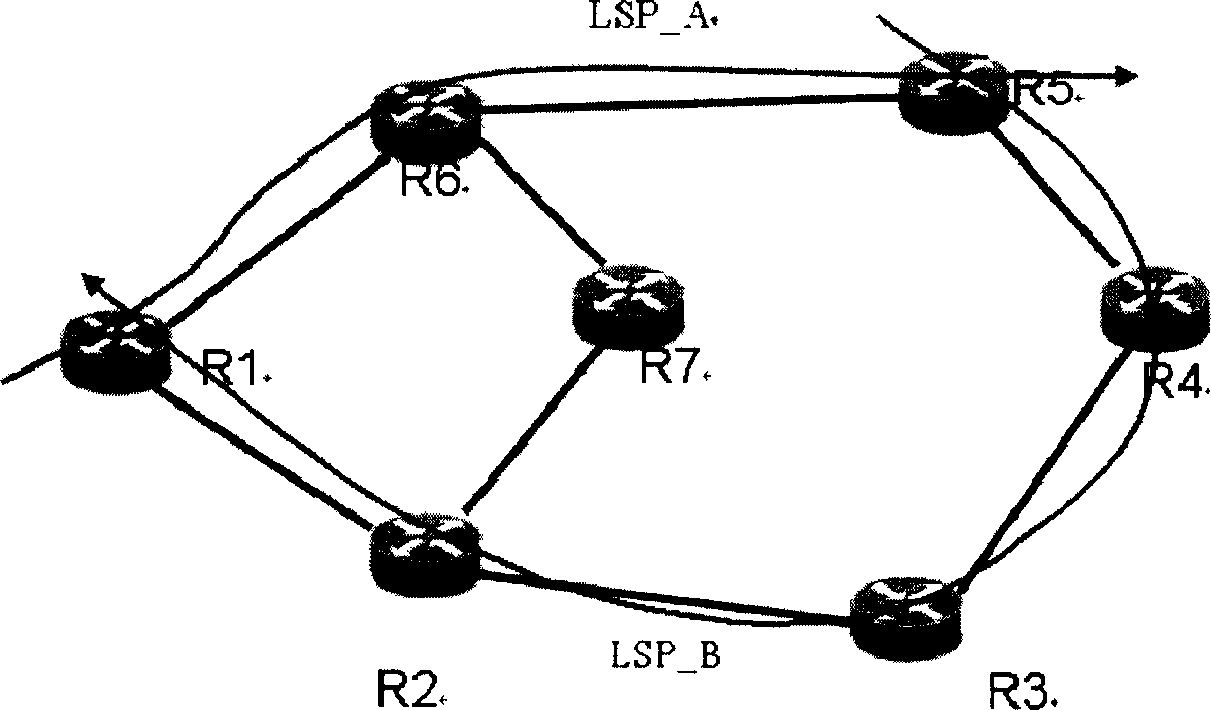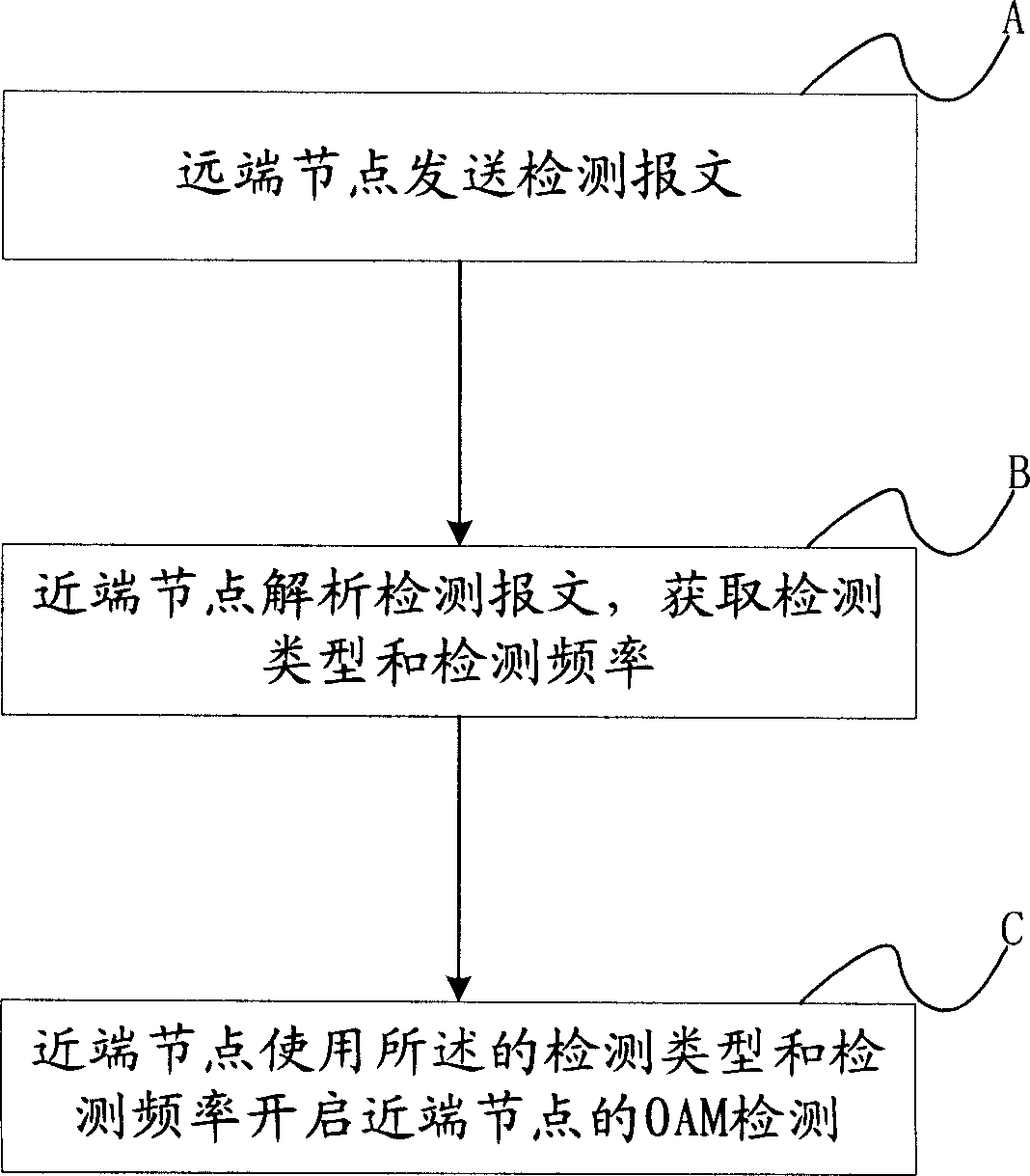Method for detecting fault by near-end node
A node detection and remote node technology, applied in digital transmission systems, electrical components, transmission systems, etc., can solve problems such as manual configuration errors, service interruptions, and inability to implement non-MPLS return paths, so as to avoid errors and simplify configurations Effect
- Summary
- Abstract
- Description
- Claims
- Application Information
AI Technical Summary
Problems solved by technology
Method used
Image
Examples
Embodiment Construction
[0055] The core of the present invention is: in MPLS OAM detection, for the near-end node of LSP obtains the message information that remote node sends, by analyzing this message information; The operation of the near-end node.
[0056] Describe the present invention in detail below in conjunction with accompanying drawing:
[0057] The specific processing flow of the method of the present invention is as follows figure 2 Shown:
[0058] In step A, the remote node of the LSP sends a detection message to the near-end node.
[0059] The detection message is the first message that the remote node reaches the near-end node through the LSP.
[0060] Step B, the near-end node of the label conversion path parses the detection message, and obtains the detection type and detection frequency of the detection message;
[0061] The detection types include: connectivity detection CV or fast defect detection FFD.
[0062] Step C, the near-end node uses the detection type and the detec...
PUM
 Login to View More
Login to View More Abstract
Description
Claims
Application Information
 Login to View More
Login to View More - R&D
- Intellectual Property
- Life Sciences
- Materials
- Tech Scout
- Unparalleled Data Quality
- Higher Quality Content
- 60% Fewer Hallucinations
Browse by: Latest US Patents, China's latest patents, Technical Efficacy Thesaurus, Application Domain, Technology Topic, Popular Technical Reports.
© 2025 PatSnap. All rights reserved.Legal|Privacy policy|Modern Slavery Act Transparency Statement|Sitemap|About US| Contact US: help@patsnap.com


